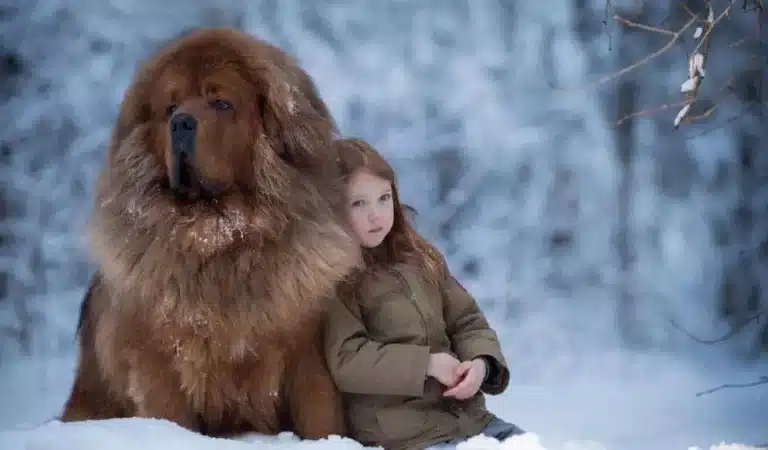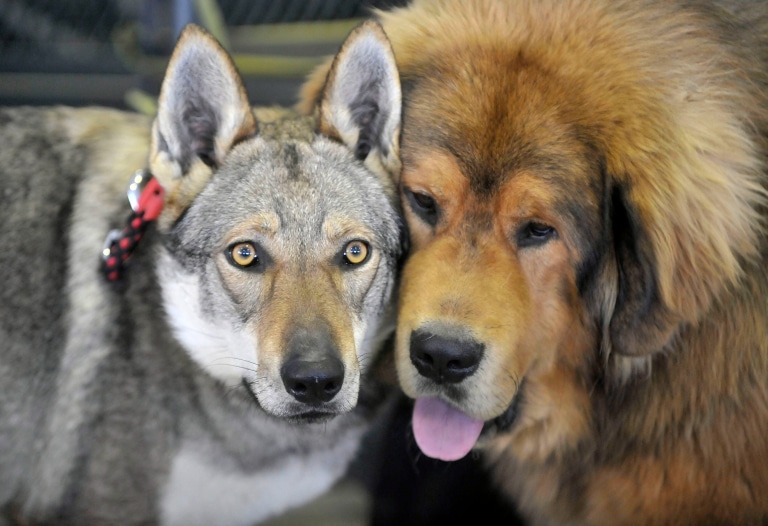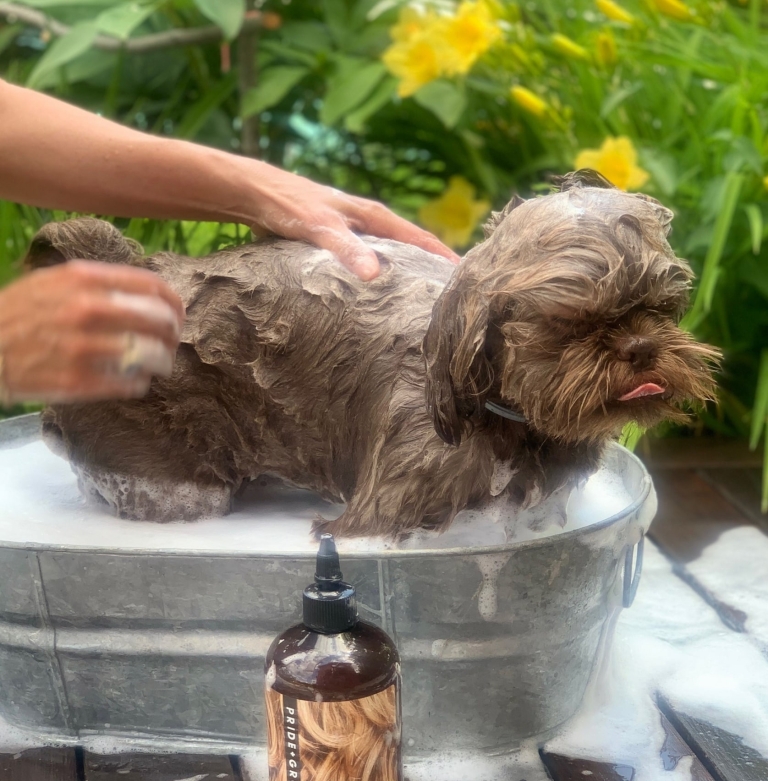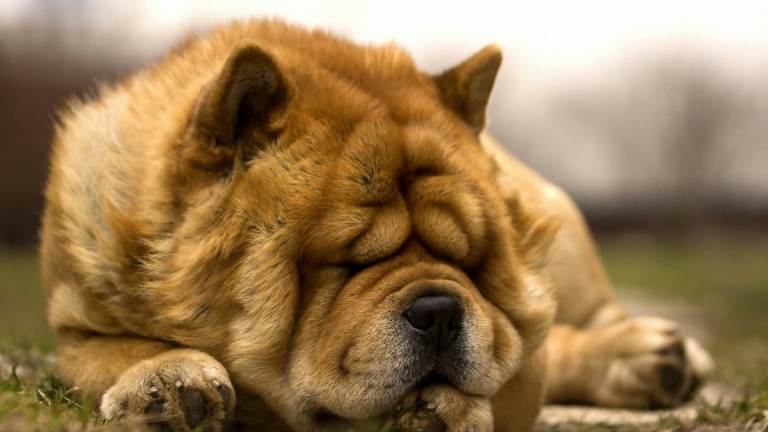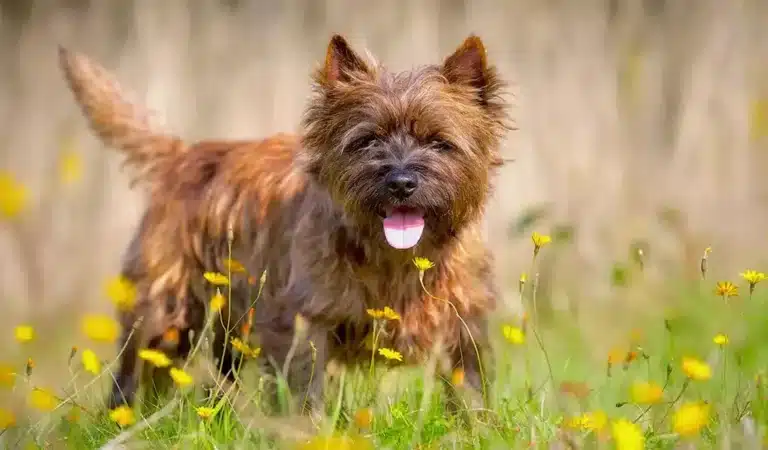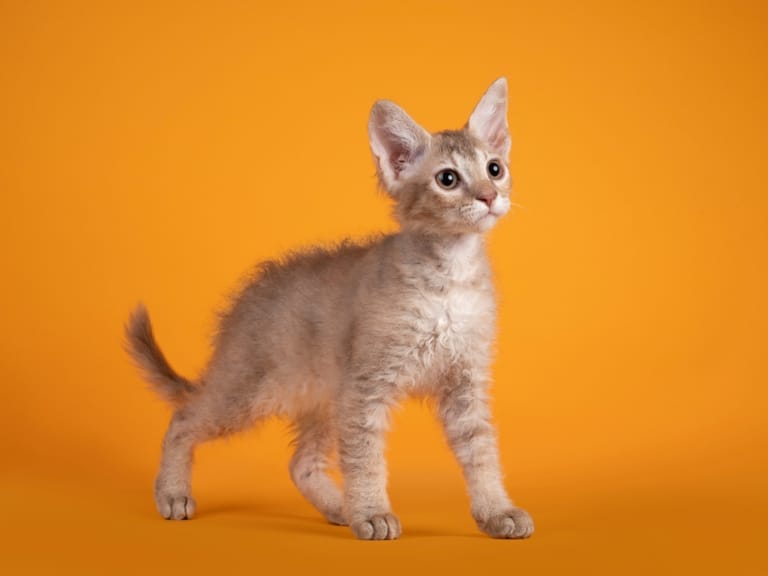Tibetan mastiffs appeared in the harsh conditions of high-altitude Tibet, where every day is a constant struggle for survival, so these dogs have become the true personification of courage and resilience. Stories shrouded in legends, as well as the rarity of the breed, have raised the price of Tibetan mastiffs to record heights. As a result, in 2014, a Chinese millionaire paid almost 2 million dollars for a red mastiff, which made the breed one of the most expensive in the world. Exciting? Get to know more about these great guys.

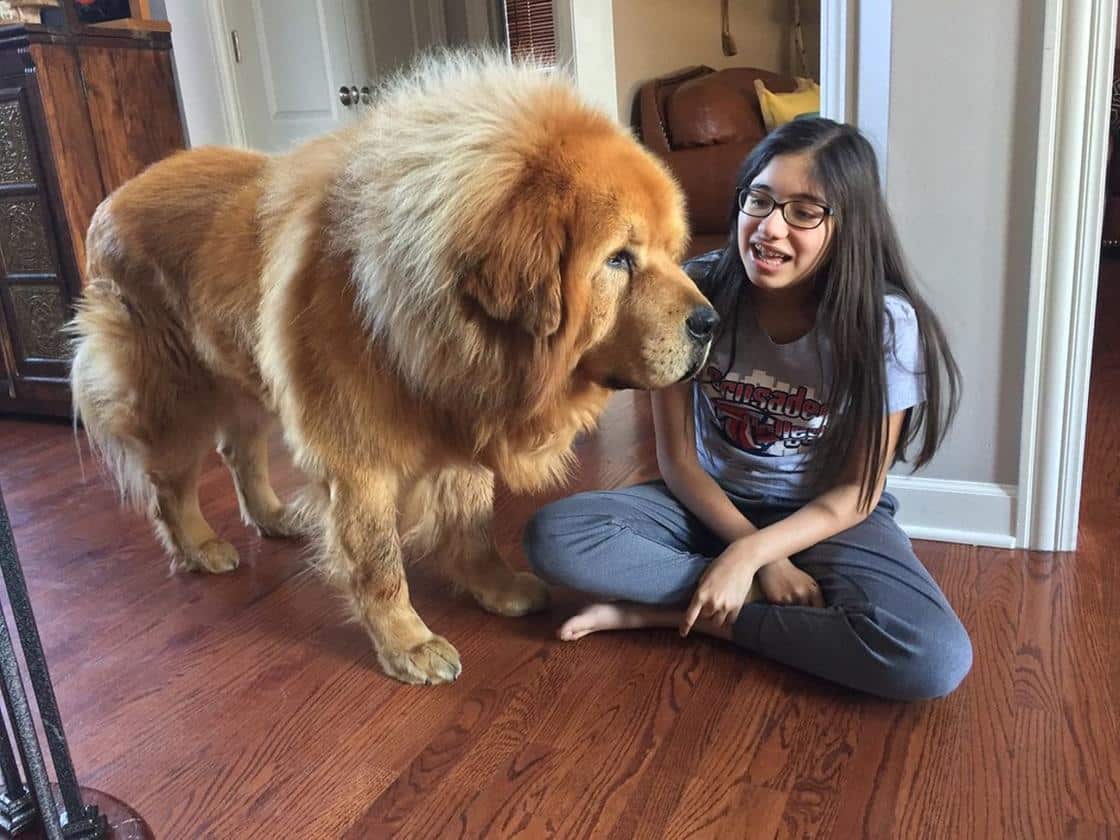
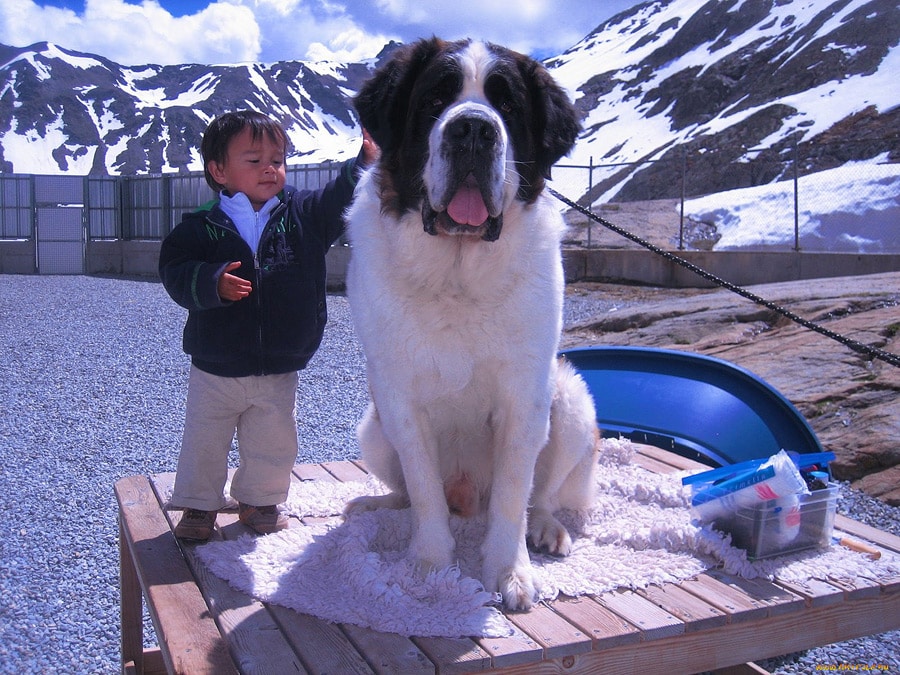
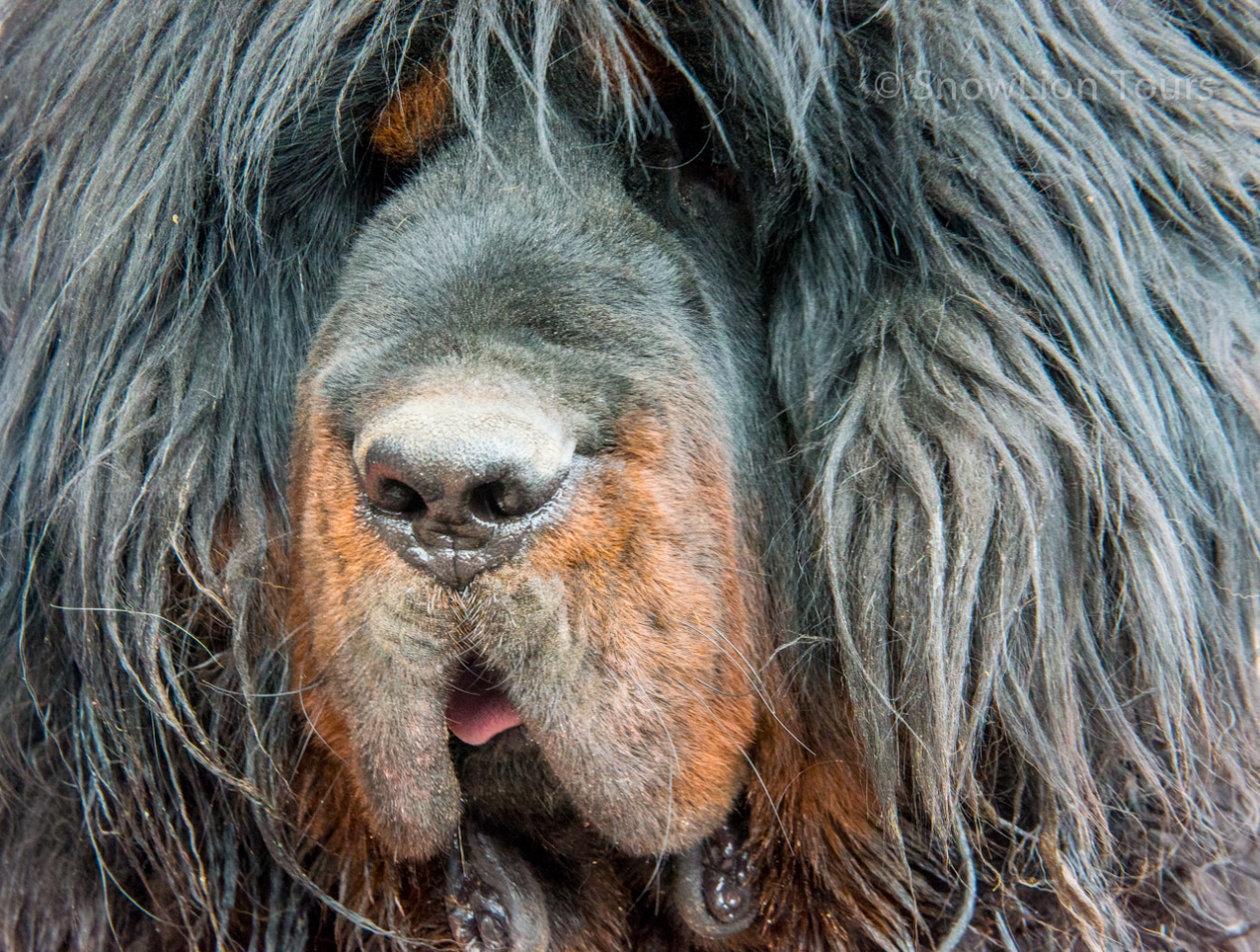
History of the breed
The first mention of these dogs appeared several thousand years ago, and according to legend, they were bred by Buddhist monks to guard monasteries. They believed that Tibetan mastiffs are the reincarnation of warrior spirits. The Buddha himself had Tibetan mastiffs that accompanied and protected him on his journeys through the Himalayas, and their powerful voice echoed for miles, scaring away predators and protecting the master from evil forces. It was this legend that cemented the reputation of dogs as brave and invincible guardians. They were considered extremely valuable and given only on special occasions, so they were rarely seen outside of Tibet.
The first Europeans to learn about mastiffs were travelers and explorers, including Marco Polo. In the 19th century, the British first brought a few mastiffs to England, where they quickly attracted the attention of the nobility and even Queen Victoria, and reached their greatest popularity in China at the beginning of the 21st century. Red mastiffs, especially of rare color, were considered a symbol of luxury and sold for crazy money.
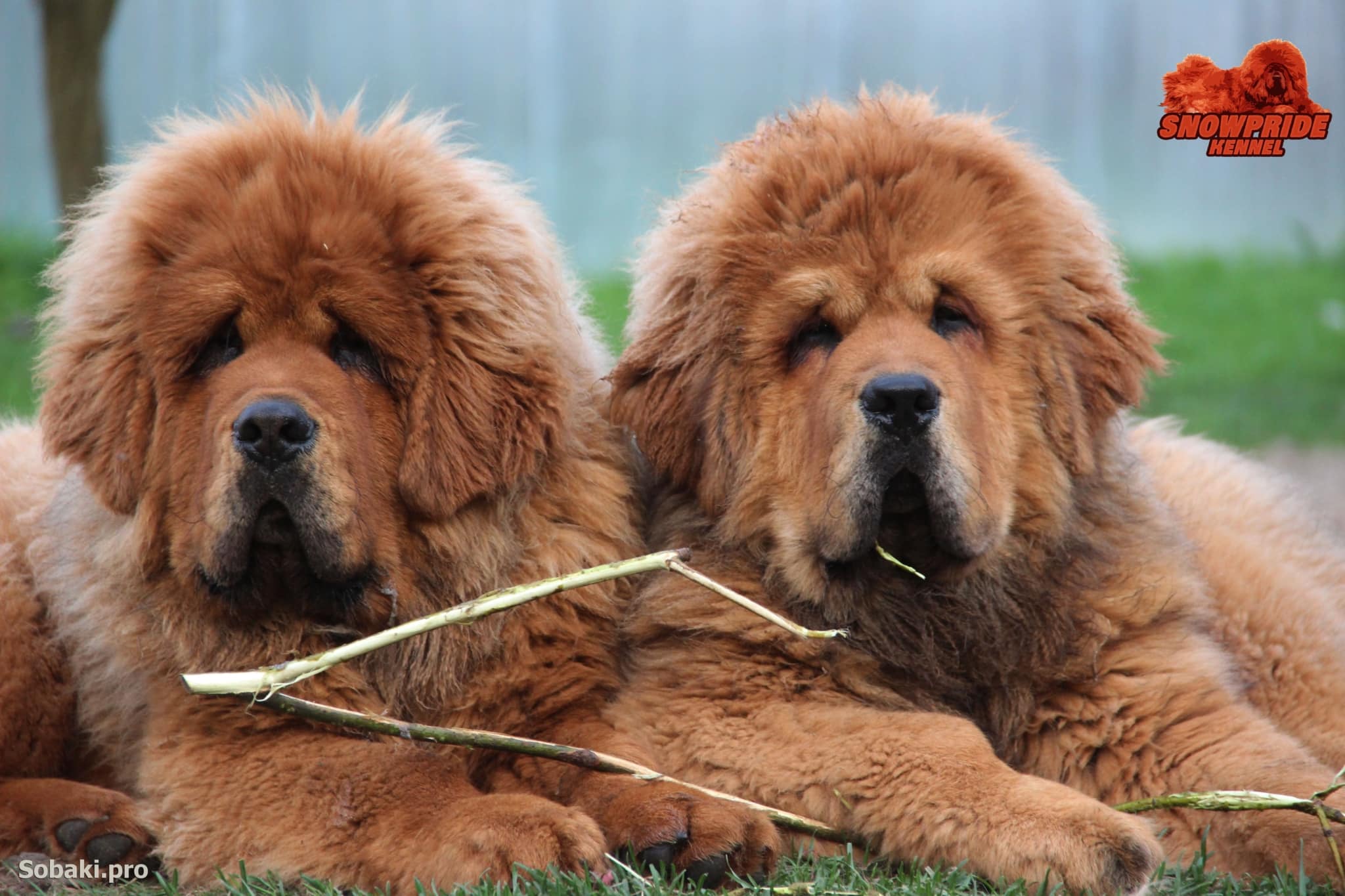
Appearance
At first glance, Tibetan mastiffs are impressive with their size. The Tibetan Mastiff weighs from 45 to 75 kilograms, and at the withers it reaches 61-76 cm. For many, these big guys are associated with small bears due to their massiveness and thick wool with a dense undercoat, which allows them to withstand the most severe cold. A thick collar of wool around the neck is more like a lion’s mane and is a characteristic feature of the breed. The color can be black, black-tan, gray, sable, gold or red. In Tibet, it has long been believed that mastiffs of different colors have different protective roles: a black mastiff is a night protector who drives away evil spirits, and a golden or red mastiff is a sun guardian who guards the home during the day.
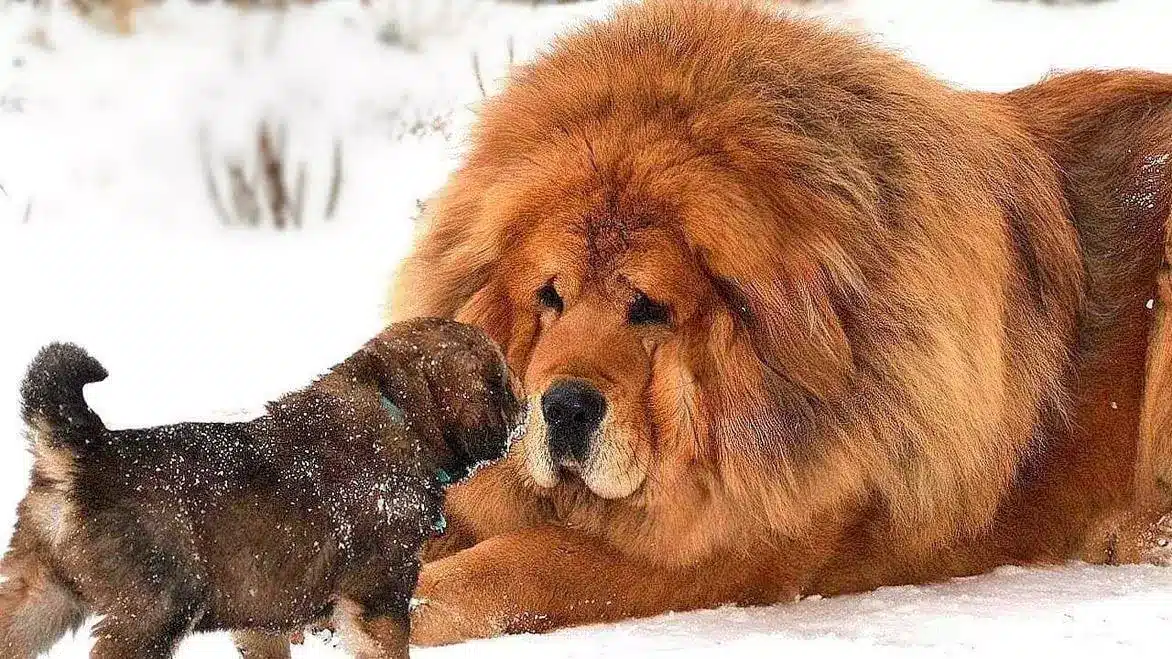
Tibetan mastiff – character and peculiarities of upbringing
As we already know, Tibetan Mastiffs went through the harsh conditions of high-altitude Tibet, so they were forced to learn to assess situations and make decisions independently. That is why they do not tend to blindly follow commands or please people, as other breeds do, and are very sensitive to tone of voice and gestures. To achieve mutual understanding with mastiffs, it is important to use clear, calm commands, without sudden or rough movements. Yelling or punishing not only will not bring results, but can also cause mistrust. Their loyalty and devotion is based on mutual respect, not fear.
An important aspect of Tibetan Mastiff education is socialization. From an early age, they need to be introduced to different people, shown animals, given the opportunity to feel various smells, so that they adapt to the world, understand that not everything unknown is dangerous. It is useful for them to visit city streets, parks, forests and hear different sounds to reduce the level of stress in new situations.
Tibetan Mastiffs love to protect their family and territory – this trait has been ingrained in them since ancient times. When a stranger approaches, they instantly respond to danger with a loud voice. However, it is worth noting that this breed is not unnecessarily aggressive. They will always remain calm and reserved if they do not feel a real threat.
Dogs are especially gentle with children: they are patient and careful, but at the same time keep their distance. Some owners note that mastiffs like to watch children’s games from afar, ready to intervene if something goes wrong.
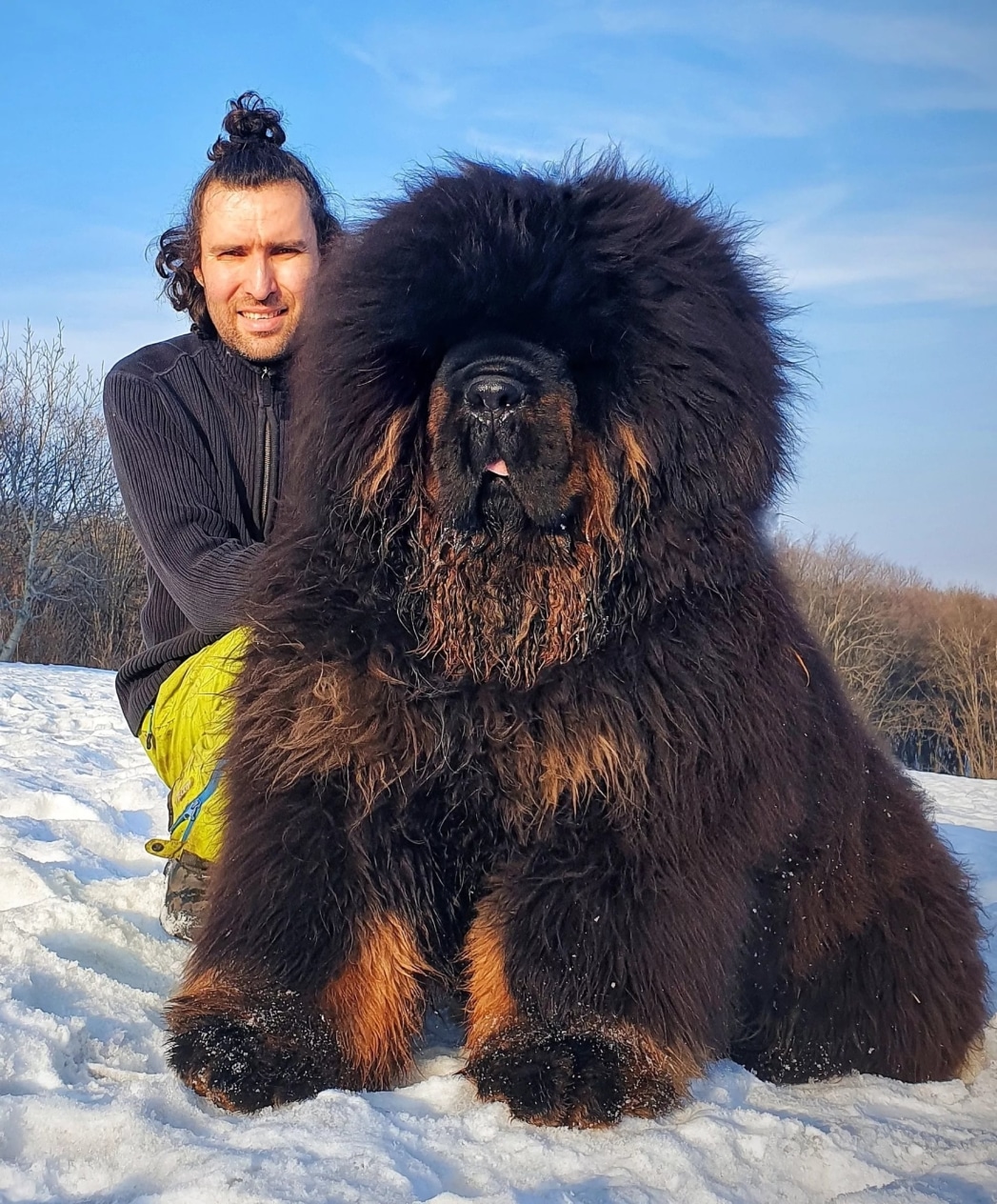
Life expectancy and health
Tibetan Mastiffs grow up more slowly than other breeds, reach full maturity only in 3-4 years and have a relatively long life – 10-12 years.
Another feature is natural protection against many diseases. Mastiffs are perfectly adapted to the cold and do not have heart problems, as is often the case with large dogs. However, they may suffer from hip and elbow dysplasia, hypothyroidism, and eye problems. In particular, mastiffs sometimes experience entropion (the eyelid rolls inward and the eyelashes can injure the eye, causing irritation).
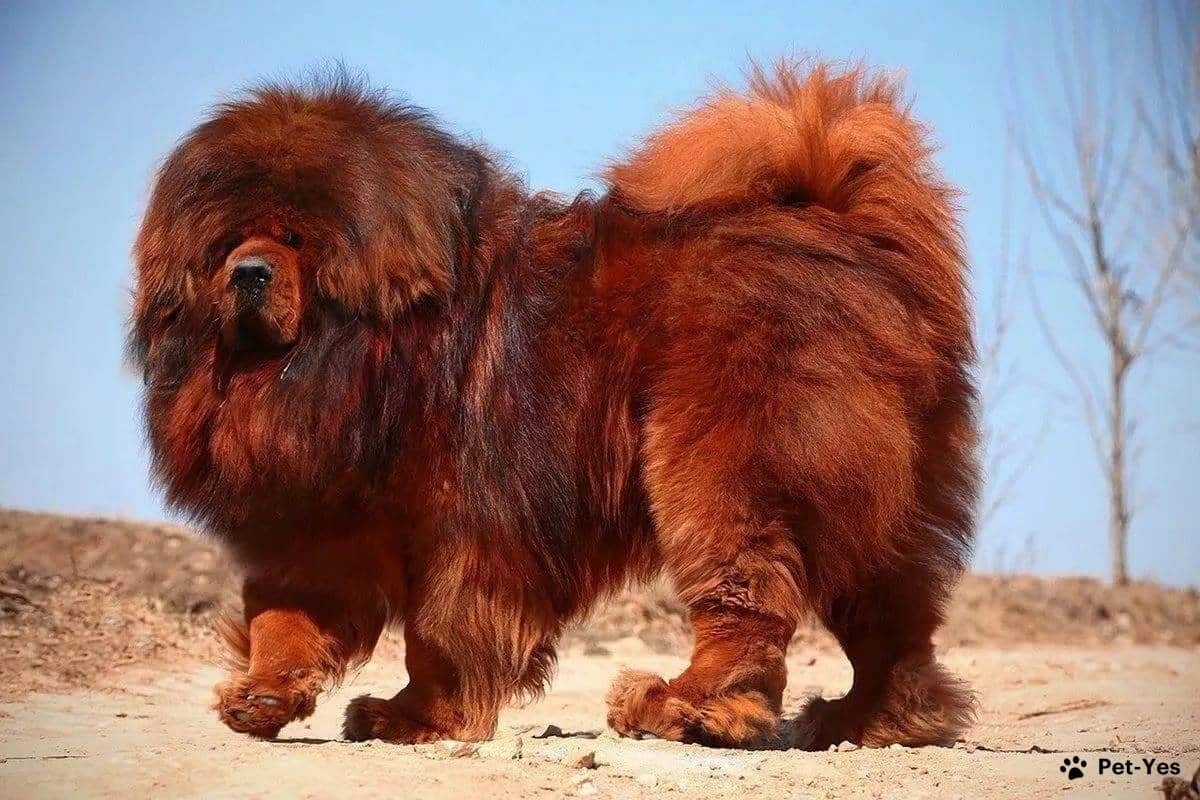
Ideal conditions of maintenance
Buying a Tibetan Mastiff is certainly a good idea, but you need to remember that this is definitely not a city dog, living in an apartment can negatively affect its health. It is made for large spaces and cool climates, so the best place to live would be a country house with a large yard where it can move freely and patrol its territory. It should be noted that the mastiff itself is not very active, it values peace and a measured lifestyle more, so small movements twice a day will be quite enough for it.
It should be noted that in a hot climate the dog overheats quickly. If hypothermia is practically not scary for a mastiff, heat is one of its main enemies, so it is necessary to provide it with shade, a cool place, a sufficient amount of water and avoid activities in the middle of the day.
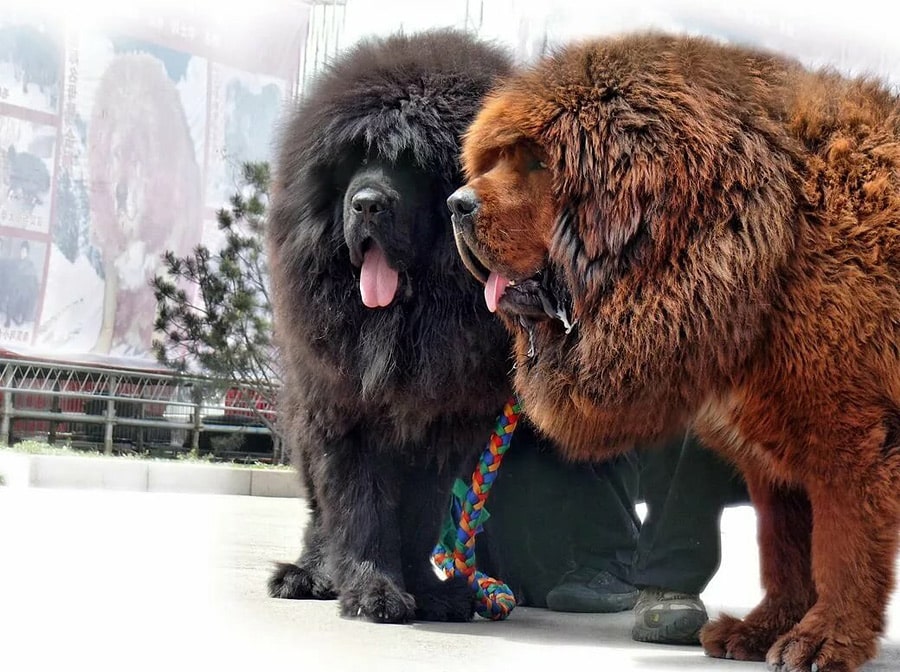
Tibetan mastiff photo
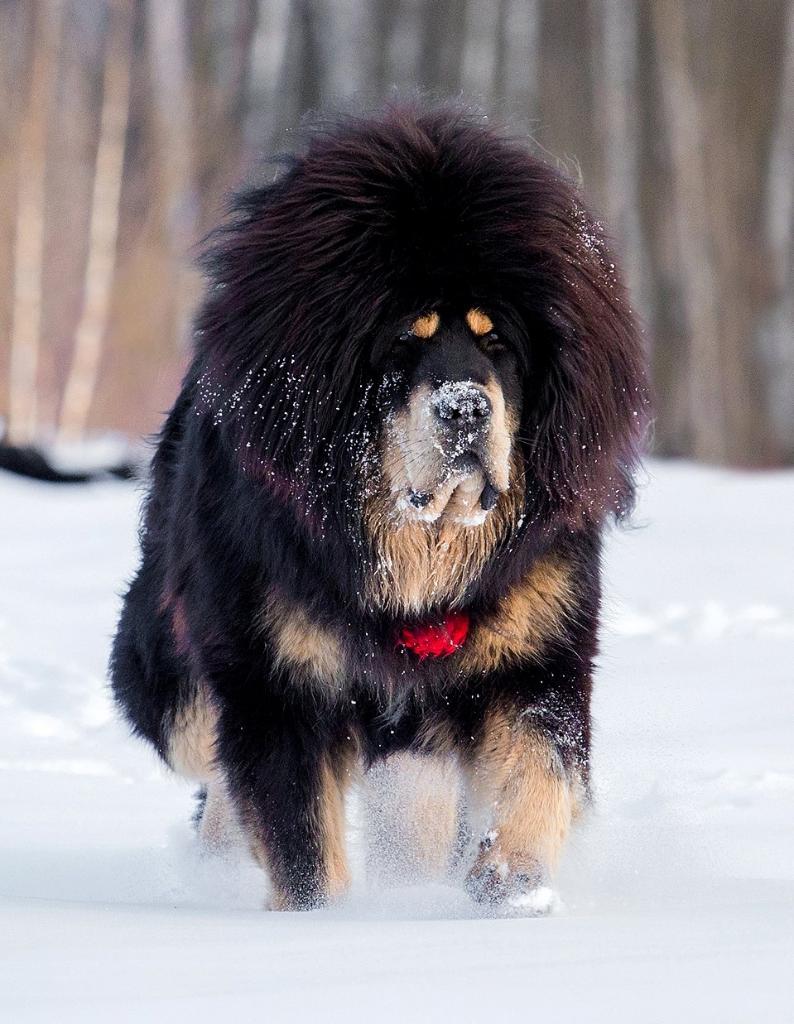
Tibetan mastiff photos

Food
The health of Tibetan mastiffs largely depends on proper nutrition. Excess weight gain can lead to stress on the joints, which worsens their condition, and proper nutrition helps to avoid this. You need to focus on a diet rich in proteins and fats, with the addition of vitamins and minerals that will support the health of the coat, skin, bones and joints. We recommend consulting with a veterinarian about a specific diet that will take into account the individual characteristics and needs of the dog.
Grooming the Tibetan Mastiff breed
Wool is the pride of the Tibetan Mastiff. It not only emphasizes its beauty, but also protects it from harsh natural conditions, providing excellent thermal insulation thanks to a special double structure (warm undercoat and long spine). And it is precisely because of this that a mastiff cannot be cut. If this is done, the dog loses the ability to independently regulate body temperature, and the coat may stop growing as before, losing its density. Caring for such a fur coat only requires regular combing 2-3 times a week, especially during the molting period, which occurs twice a year.
In order not to damage the natural balance of the skin, it is enough to bathe the mastiff once every few months or as necessary. And after a walk, it is often enough to simply wipe the paws, as wool has natural properties to repel dirt. But drying after bathing is a real test. Thick wool absorbs a lot of water, and to dry it, you have to use a special hair dryer and spend more than one hour on it.
Daily care for a mastiff also includes checking the eyes, ears, trimming the claws and brushing the teeth with toothpaste and a brush several times a week.

The V.O.G DOG SALON network of grooming salons will be happy to help you take care of the appearance of the Tibetan Mastiff and provide recommendations to facilitate home care.

